HistoricalSites, Poland
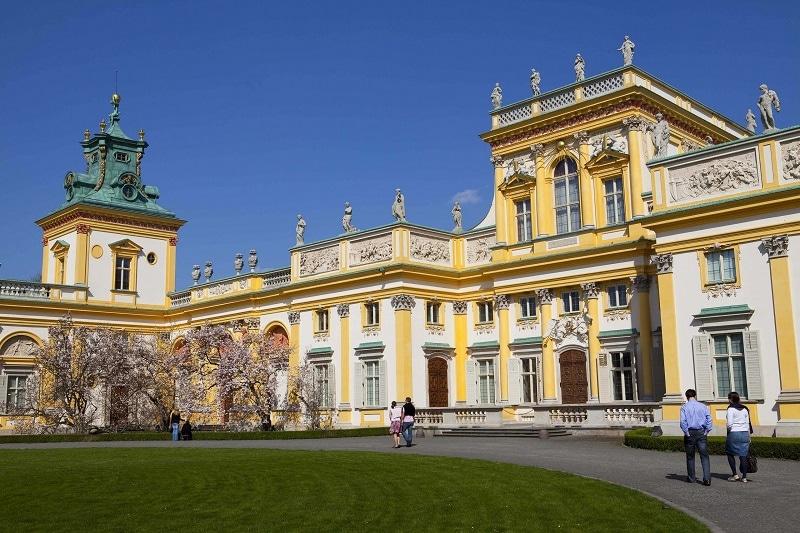
Removed from Unnamed collection
Museum of King Jan III's Palace at Wilanow 
Wilanów Palace is a true pearl of Baroque architecture in Warsaw. Learn about King Jan III Sobieski, who successfully fended off the Turks in the battle of Vienna and who lived in Wilanów with his beloved Marysieńka. Take a walk in the park and tour the palace interiors; see the portrait gallery and listen to stories of great romances. The building and the park have both kept their original form, despite the partition, war, and occupation.
See the home of King Jan III Sobieski, the vanquisher of the Turks at Vienna, who in 1683 stopped their march through Europe. The ruler, who gained the nickname of the fearless Lion of Lechistan, lived in the palace with his beloved wife, Maria.
In the palace, you will see the king’s apartments and the suites of Queen Maria Kazimiera, which include the Chinese, Dutch and Antiquities rooms and the Potocki Museum. Stop for a moment in the White Room to see images of other palace owners and people associated with it.
Wilanów Palace is a must-see when visiting Warsaw. In the wintertime, the venue, illuminated with thousands of lamps, transforms into the Royal Garden of Lights. http://warsawtour.pl/en/project/museum-of-king-jan-iiis-palace-at-wilanow-2/
Map
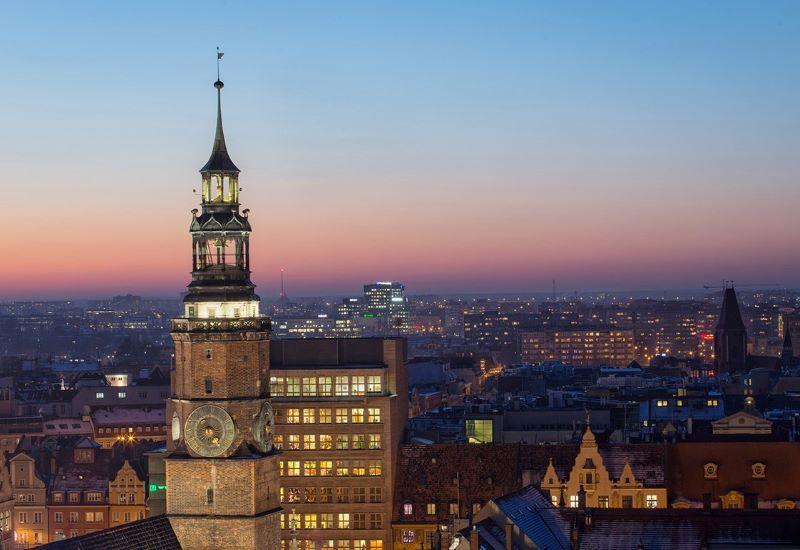
Removed from Unnamed collection
Wroclaw Old Town Hall 
Old Town Hall is a unique Gothic building in European architecture. It has 2 storeys, 3 parts with a rectangular building of the councils, which is attached to the northern wall and a square tower. Located in the city centre, it was being built for about 250 years (13 - 16th century). It used to serve as the seat of the city authorities and the court.
The oldest part of the Town Hall was built ca. 1299 (according to the sources). This part is called consistorium (Latin: place of gatherings) and now belongs to the building. The consistorium has two parts: the underground hall covered with the ceiling and the Western tower. After buying the rights of the voyt, the meaning of the Council was much bigger. The growing number of the Council members demanded a new building. In the years 1328-1333, near the consistorium a new, smaller building was built - praetorium (Latin: the seat of the leaders). The building is the northern part of the Town Hall, near the square with the whipping post.
Since the very beginning the Town Hall has witnessed many important historical events and has been a representative building where the authorities invited their honourable guests. This tradition is still alive. The most important world leaders, monarchs, clergy and artists have been invited into the Town Hall. In the cellar of the building there is one of the oldest restaurants in Europe - the legendary Piwnica Świdnicka. https://visitwroclaw.eu/en/place/old-town-hall-in-wroclaw
Map
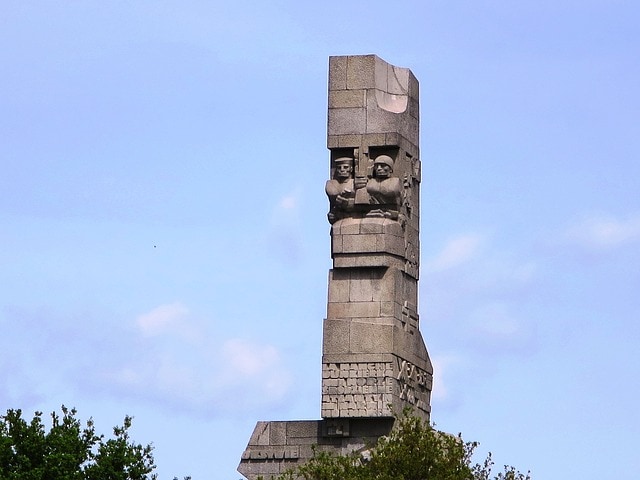
Removed from Unnamed collection
Westerplatte 
The monument was build to preserve the unique historical values, spatial tangible and intangible, symbolizing the heroism and bravery of Polish soldiers during the Second World War - the largest of the wars of the twentieth century. https://www.gdansk.pl/turystyka/Szlak-turystyczny-Westerplatte,a,6189
Map

Removed from Unnamed collection
The Crane 
A thick hemp rope, a system of blocks and two wooden turnstiles moved by... walking workers. The crane’s medieval mechanism lifting 4-ton loads to a height of 11 metres was also used to install masts. Located on the Motława River, Gdańsk’s most characteristic monument is the largest medieval port crane in Europe and at the same time a fortified water gate with two huge brick towers, once protecting the city from the side of the harbour. Now the majestic Crane, as a great example of historic port buildings, a witness of the powerful Hanseatic Gdańsk, called the granary of Europe, is the perfect setting for exhibitions of the National Maritime Museum. Its headquarters are also situated on the other side of the Motława River on Ołowianka Island. http://visitgdansk.com/en/hity-gdanska/The-Crane,a,3485
Map
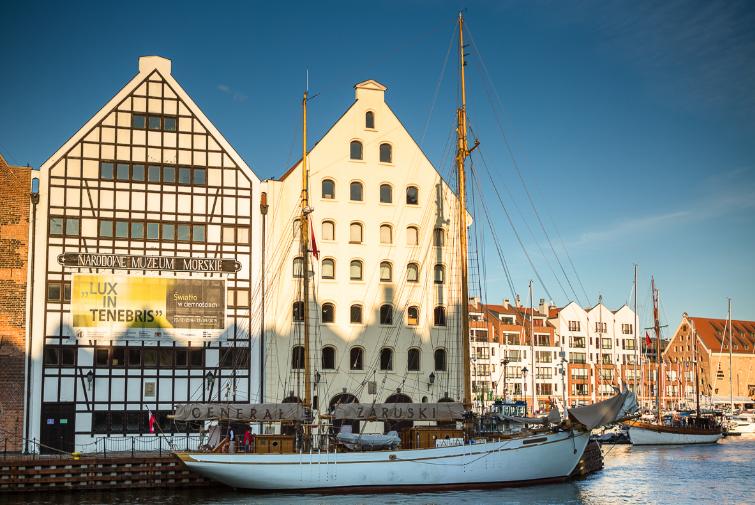
Removed from Unnamed collection
National Maritime Museum 
The National Maritime Museum, considered to be one of the finest of its kind in Europe. Among the exhibits presented one can see: port navigation, techniques of reloading goods, what a merchant trading office and middle-class salon looked like, as well as the workshops of sailmakers, ship carpenters and ropemakers. The historic walls also conceal Poland’s only permanent exhibition of maritime paintings. The exhibition shows the history of diving and the most interesting archaeological sites in Poland and the world. It includes diving equipment: suits, devices and different types of diving bells that were used to explore the seabed. Some of the world’s most famous archaeological sites presented in the exhibition are shipwrecks from Homer’s epoch found off the coast of Turkey. The section devoted to underwater archaeology in Poland presents the largest achievements of the National Maritime Museum’s research team - “Miedziowca” a merchant ship from the fifteenth century, exploration of the Swedish warship “Solena” from the seventeenth century and the English wreck from the eighteenth century “General Carlton of Withby”. The youngest branch of the museum - the Maritime Culture Centre located next to the Crane is the only educational facility in Poland and one of the most modern facilities in Europe, which in an interactive and multimedia way presents maritime issues. It is an exciting adventure in science! http://visitgdansk.com/en/hity-gdanska/The-Crane,a,3485
Map
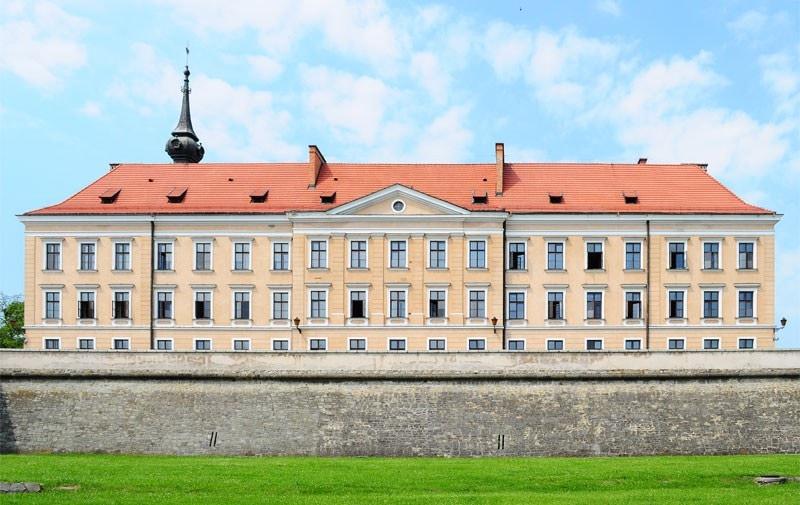
Removed from Unnamed collection
Rzeszow Castle 
The Rzeszów castle is undoubtedly one of the most interesting monuments of the city - not only because of its history, but also because of the fact that it is an interesting testimony to conservation thought from the turn of the 19th and 20th centuries, when its present form was created.
The castle was located south of the city, in the village of Staroniwa, at the end of an elongated loess headland surrounded on three sides by water obstacles: the Wisłok River and ponds or swamps. The intersection of this promontory with a moat substantially strengthened the defense of this place. In this area, during archaeological research, traces of prehistoric settlement (in the area of the northern curtain of the bastion fortifications) and late-medieval (on the southeast bastion) were found. At present, the hypothesis about the existence of a defensive court, mentioned in the document from 1447, regarding the division of property between Jan and Stanisław Rzeszowski is unlikely to be verified, but this hypothesis is very likely. http://www.rzeszow.pl/miasto-rzeszow/historia/zabytki-rzeszowa/zamek-w-rzeszowie
Map
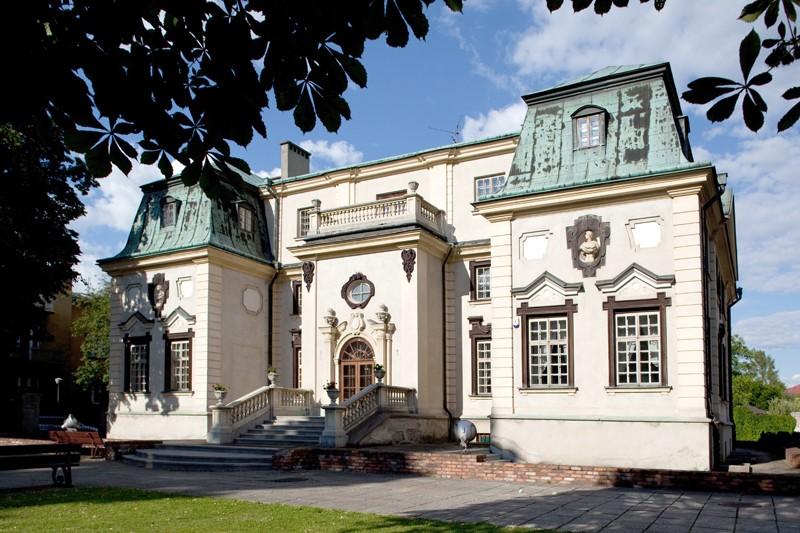
Removed from Unnamed collection
Lubomirski Summer Palace 
Lubomirski Summer Palace in Rzeszów is one of the most valuable architectural city preserved to our times. Located in close proximity to the Castle of the Lubomirski, over the centuries, it has undergone many reconstructions. He did not keep their original architectural garments, as well as the baroque gardens that stretched around. Despite this, the testimony of a former glory still patronage of the Lubomirski family, then owners latifundium.
Currently, the Summer Palace of Lubomirski houses the seat of the Regional Medical Chamber. Some rooms on the second floor are for rent. The basements described earlier were adapted as restaurant and catering facilities. http://www.rzeszow.pl/miasto-rzeszow/historia/zabytki-rzeszowa/palac-letni-lubomirskich
Map

Removed from Unnamed collection
Town Hall 
The first town hall in Rzeszów probably existed in the 14th century. The town foundation act from 1427 issued by Piotr Lunak from Wiśnicz and Stoigniew from Szumsko confirms the existence of the town hall together with cellars at that time, where wine and honey were sold. Further history of the village is unknown, probably during fights with invaders and in city fires it was destroyed many times. The new town hall was built on the order of Mikołaj Spytek Ligęza before 1591. It was a small stone building with a porch, a vestibule and a tower, surrounded by numerous stalls. This building was destroyed during the invasion of Jerzy Rakoczy in 1657. The building of the town hall is mentioned in documents only at the end of the 17th century. 1730 it was renovated and expanded under the leadership of KH Wiedemann. It was a building of various shapes, with a clock tower. http://www.rzeszow.pl/miasto-rzeszow/historia/zabytki-rzeszowa/ratusz
Map
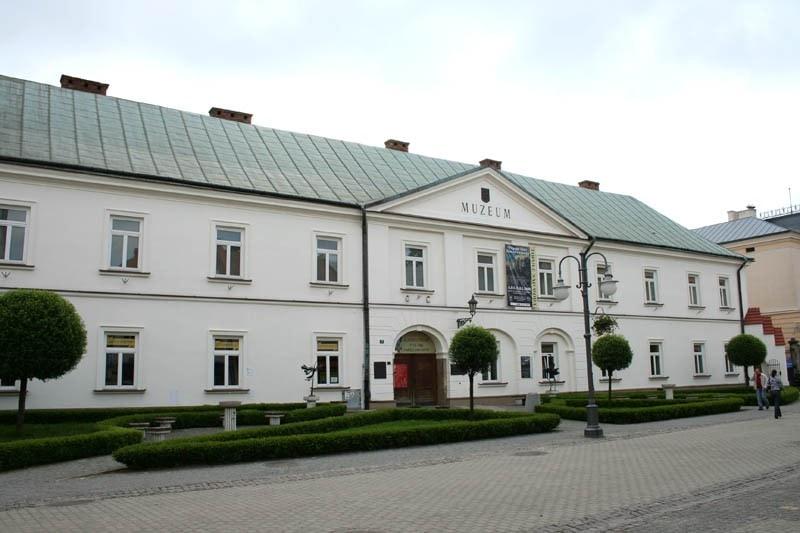
Removed from Unnamed collection
District Museum 
The District Museum in Rzeszów is a multi-faceted institution located in the historic 17th century Piarist building at 3 Maja 19 Street. The historical monastery complex includes the former male school of the Order of Piarists (currently I High School). The center of the architectural complex is occupied by the parish church of Saint. Cross with a beautiful interior design. http://www.rzeszow.pl/kultura-i-sport/galerie/galeria-fotografii-miasta-rzeszowa
Map

Removed from Unnamed collection
3 Maja Street 
3 Maja Street (former paniaga) is one of the oldest and prettiest streets downtown. An elegant promenade of our city, a place of family and friendly meetings. This oldest city route was created shortly after Rzeszów was granted city rights (in 1354). He connected the headquarters of the then owners of the city (the area of the later built Lubomirski Castle) with the Parish Church and the Bernardine Fathers' Monastery. It begins at Farny Square and the intersection with Kościuszki Street, and ends at the branch where the Lubomirskich Avenue and Zamkowa Street start. The current street name was given to it in 1891 on the occasion of the centenary of the 3rd May Constitution. Initially it was Zamkowa Street, then Pijarska Street, then Pańska Street, it was called Paniaga in the dialect of Rzeszów.
In the buildings on the east side of the street behind the building of the "Galeria Paniaga", a large section of the street is occupied by the frontage of the complex of the former Piarist convent, and then two banking buildings. A statue of Stanisław Konarski, unveiled in 1989, by Kazimierz Mierczyński is standing in front of the building of the former college, now I LO. The buildings on the west side of the street, from Farny Square, are opened by a corner tenement house No. 2 built around 1840, which once housed the printing house and the first Andrzej Pelar bookstore in Rzeszów. Further, behind the branch of Jagiellońska Street, there are two stately Art Nouveau tenement houses. http://www.rzeszow.pl/miasto-rzeszow/historia/zabytki-rzeszowa/ulica-3-maja
Map
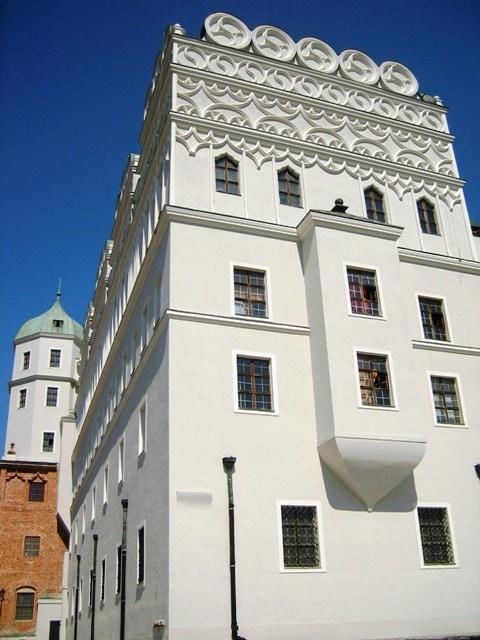
Removed from Unnamed collection
Castle of the Pomeranian Dukes 
The first wooden residence for the rulers of Pomerania was first erected here in the 13th century, on a hill along the Odra River. More than 100 years later Barnim III made it a building of stone. The Pomeranian Duke's Castle (Zamek Książąt Pomorskich) was then continuously expanded. http://www.visitpomerania.eu/cities/szczecin/attractions/pomeranian-dukes-castle/
Map

Removed from Unnamed collection
Znin town 
Żnin is a charming town, situated about 42 km from Bydgoszcz in the historical region of Pałuki, whose origins date back 750 years.Its symbol is the 15th-century tower of the Town Hall. http://www.visitbydgoszcz.pl/en/discover/environs/3020-znin
Map
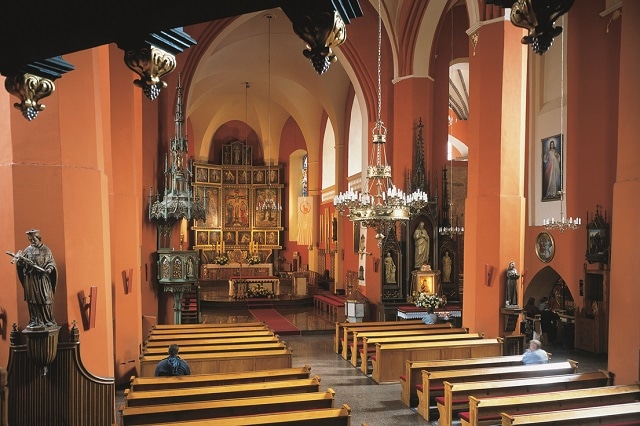
Removed from Unnamed collection
Co-cathedral of Saint Hedwig 
The oldest architectural monument in the city, dated to the 2nd half of the 14th century.The cathedral has a triple-nave hall arrangement with a separate presbytery. Inside there are a neo-Gothic alter, late Gothic sculptures of Saint Hedwig and Saint Anna Samotrzec, a Baroque choir and a series of stone slabs with epitaphs. http://www.cit.zielona-gora.pl/article,en,206,monuments.html
Map
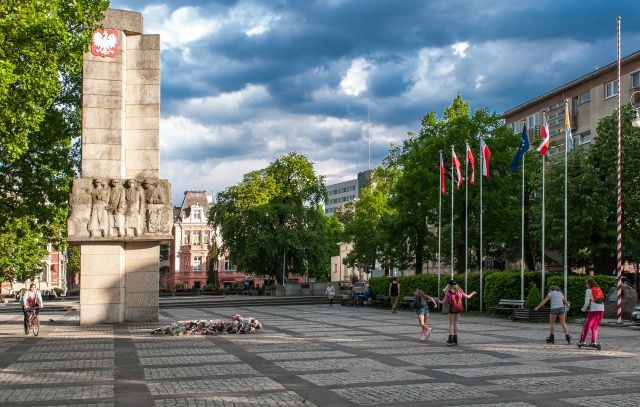
Removed from Unnamed collection
Heroes Square (Plac Bohaterow) 
Designed with the street leading to railway station (now al. Independence) in the 60s, it received its final form in 1894. Until the First World War there was a monument of the German Emperor William I. However, the statue was later seized for military purposes in 1917. In 1945, the monument of Gratitude to Soviet Soldiers was unveiled. http://www.cit.zielona-gora.pl/article,en,206,monuments.html
Map
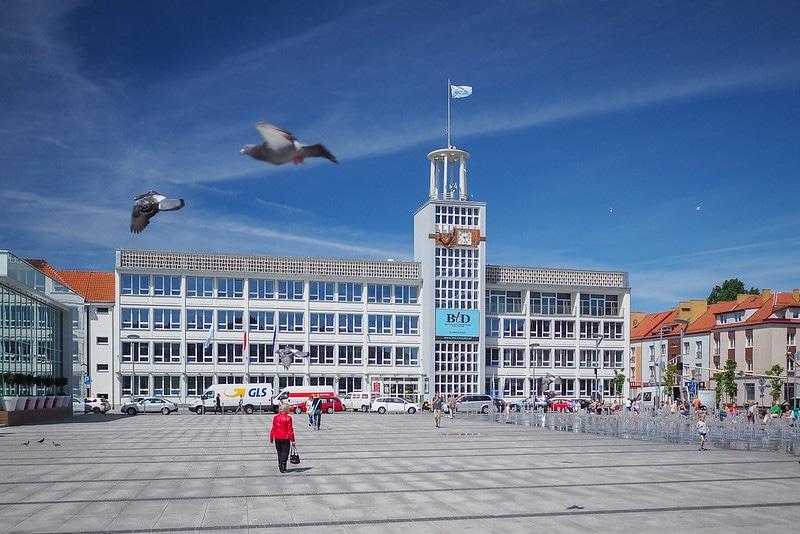
Removed from Unnamed collection
Koszalin City Hall 
The city government seats in a postmodern building at the Rynek that was constructed in the early sixties of the 20th century. It is the sixth Town Hall (Ratusz) of Koszalin. The last Town Hall was located on the southern side of the market place, but burnt down in March 1945. http://www.visitpomerania.eu/cities/koszalin/attractions/city-hall/
Map

